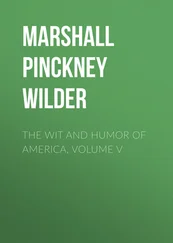The climate of these mountains is so mild that at the farm of the Cocollar the cotton and coffee tree, and even the sugar cane, are cultivated with success. Whatever the inhabitants of the coasts may allege, hoar-frost has never been found in the latitude of 10 degrees, on heights scarcely exceeding those of the Mont d'Or, or the Puy-de-Dome. The pastures of Turimiquiri become less rich in proportion to the elevation. Wherever scattered rocks afford shade, lichens and some European mosses are found. The Melastoma guacito,* (* Melastoma xanthostachys, called guacito at Caracas.) and a shrub, the large and tough leaves of which rustle like parchment* when shaken by the winds, (* Palicourea rigida, chaparro bovo. In the savannahs, or llanos, the same Castilian name is given to a tree of the family of the proteaceae.) rise here and there in the savannah. But the principal ornament of the turf of these mountains is a liliaceous plant with golden flowers, the Marica martinicensis. It is generally observed in the province of Cumana and Caracas only at 400 or 500 toises of elevation.* (* For example, in the Montana de Avila, on the road from Caracas to La Guayra, and in the Silla de Caracas. The seeds of the marica are ripe at the end of December.) The whole rocky mass of the Turimiquiri is composed of an alpine limestone, like that of Cumanacoa, and a pretty thin strata of marl and quartzose sandstone. The limestone contains masses of brown oxidated iron and carbonate of iron. I have observed in several places, and very distinctly, that the sandstone not only reposes on the limestone, but that this last rock frequently includes and alternates with the sandstone.
We distinguished clearly the round summit of the Turimiquiri and the lofty peaks or, as they are called, the Cucuruchos, covered with thick vegetation, and infested by tigers which are hunted for the beauty of their skin. This round summit, which is covered with turf, is 707 toises above the level of the ocean. A ridge of steep rocks stretches out westward, and is broken at the distance of a mile by an enormous crevice that descends toward the gulf of Cariaco. At the point which might be supposed to be the continuation of the ridge, two calcareous paps or peaks arise, the most northern of which is the loftiest. It is this last which is more particularly called the Cucurucho de Turimiquiri, and which is considered to be higher than the mountain of the Brigantine, so well known by the sailors who frequent the coasts of Cumana. We measured, by angles of elevation, and a basis, rather short, traced on the round summit, the peak of Cucurucho, which was about 350 toises higher than our station, so that its absolute height exceeded 1050 toises.
The view we enjoyed on the Turimiquiri is of vast extent, and highly picturesque. From the summer to the ocean we perceived chains of mountains extended in parallel lines from east to west, and bounding longitudinal valleys. These valleys are intersected at right angles by an infinite number of small ravines, scooped out by the torrents: the consequence is, that the lateral ranges are transformed into so many rows of paps, some round and others pyramidal. The ground in general is a gentle slope as far as the Imposible; Farther on the precipices become bold, and continue so to the shore of the gulf of Cariaco. The form of this mass of mountains reminded us of the chain of the Jura; and the only plain that presents itself is the valley of Cumanacoa. We seemed to look down into the bottom of a funnel, in which we could distinguish, amidst tufts of scattered trees, the Indian village of Aricagua. Towards the north, a narrow slip of land, the peninsula of Araya, formed a dark stripe on the sea, which, being illumined by the rays of the sun, reflected a strong light. Beyond the peninsula the horizon was bounded by Cape Macanao, the black rocks of which rise amid the waters like an immense bastion.
The farm of the Cocollar, situated at the foot of the Turimiquiri, is in latitude 19 degrees 9 minutes 32 seconds. I found the dip of the needle 42.1 degrees. The needle oscillates 229 times in ten minutes. Possibly masses of brown iron-ore, included in the calcareous rock, caused a slight augmentation in the intensity of the magnetic forces.
On the 14th of September we descended the Cocollar, toward the Mission of San Antonio. After crossing several savannahs strewed with large blocks of calcareous stone, we entered a thick forest. Having passed two ridges of extremely steep mountains,* (* These ridges, which are rather difficult to climb towards the end of the rainy season, are distinguished by the names of Los Yepes and Fantasma.) we discovered a fine valley five or six leagues in length, pretty uniformly following the direction of east and west. In this valley are situated the Missions of San Antonio and Guanaguana; the first is famous on account of a small church with two towers, built of brick, in pretty good style, and ornamented with columns of the Doric order. It is the wonder of the country. The prefect of the Capuchins completed the building of this church in less than two summers, though he employed only the Indians of his village. The mouldings of the capitals, the cornices, and a frieze decorated with suns and arabesques, are executed in clay mixed with pounded brick. If we are surprised to find churches in the purest Grecian style on the confines of Lapland,* (* At Skelefter, near Torneo.—Buch, Voyage en Norwege.) we are still more struck with these first essays of art, in a region where everything indicates the wild state of man, and where the basis of civilization has not been laid by Europeans more than forty years.
I stopped at the Mission of San Antonio only to open the barometer, and to take a few altitudes of the sun. The elevation of the great square above Cumana is 216 toises. After having crossed the village, we forded the rivers Colorado and Guarapiche, both of which rise in the mountains of the Cocollar, and blend their waters lower down towards the east. The Colorado has a very rapid current, and becomes at its mouth broader than the Rhine. The Guarapiche, at its junction with the Rio Areo, is more than twenty-five fathoms deep. Its banks are ornamented by a superb gramen, of which I made a drawing two years afterward on ascending the river Magdalena. The distich-leaved stalk of this gramen often reaches the height of fifteen or twenty feet.* (* Lata, or cana brava. It is a new genus, between aira and arundo. This colossal gramen looks like the donax of Italy. This, the arundinaria of the Mississippi, (ludolfia, Willd., miegia of Persoon,) and the bamboos, are the highest gramens of the New Continent. Its seed has been carried to St. Domingo, where its stalk is employed to thatch the negroes' huts.)
Towards evening we reached the Mission of Guanaguana, the site of which is almost on a level with the village of San Antonio. The missionary received us cordially; he was an old man, and he seemed to govern his Indians with great intelligence. The village has existed only thirty years on the spot it now occupies. Before that time it was more to the south, and was backed by a hill. It is astonishing with what facility the Indians are induced to remove their dwellings. There are villages in South America which in less than half a century have thrice changed their situation. The native finds himself attached by ties so feeble to the soil he inhabits, that he receives with indifference the order to take down his house and to rebuild it elsewhere. A village changes its situation like a camp. Wherever clay, reeds, and the leaves of the palm or heliconia are found, a house is built in a few days. These compulsory changes have often no other motive than the caprice of a missionary, who, having recently arrived from Spain, fancies that the situation of the Mission is feverish, or that it is not sufficiently exposed to the winds. Whole villages have been transported several leagues, merely because the monk did not find the prospect from his house sufficiently beautiful or extensive.
Читать дальше












